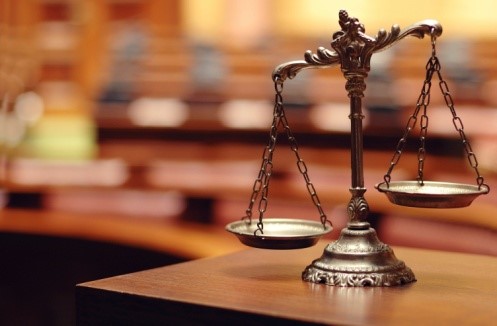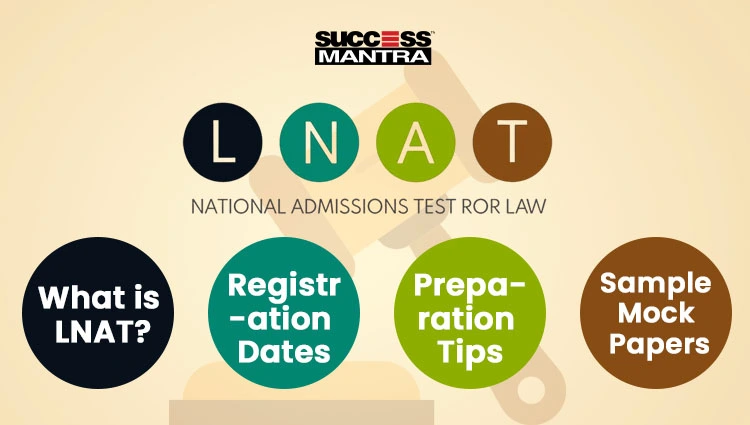
J&K HIGH COURT RENAMED AS HIGH COURT OF J&K AND LADAKH
J&K HIGH COURT RENAMED AS HIGH COURT OF J&K AND LADAKH

The Government of India has officially renamed the Jammu and Kashmir High Court as ‘High Court of Jammu and Kashmir and Ladakh’. President of India Ram Nath Kovind signed the Jammu and Kashmir Reorganisation (Removal of Difficulties) Order, 2021, to effect the change on July 16, 2021 by powers under the conferred Section 103 (1) of the Jammu and Kashmir Reorganisation Act, 2019. The Union Ministry of Law and Justice, Department of Justice notified the order.
LAW MINISTRY'S NOTIFICATION
The notification from the Ministry read, “Present nomenclature is found to be rather long-winding and cumbersome. The said nomenclature may be substituted as High Court of Jammu and Kashmir and Ladakh, which besides being convenient would also be in consonance with the name pattern followed in other common HCs." The notification also stated that views were sought on the proposal from J&K Lieutenant Governor, Ladakh Lieutenant Governor and the Chief Justice of the High Court.
JAMMU AND KASHMIR HIGH COURT

The High Court of Jammu and Kashmir anyway served as a common court for both union territories of Jammu and Kashmir and Ladakh. The High Court was first established on March 26. 1928 by letters patent issued by the Maharaja of Jammu and Kashmir. The court's seat shifts between Jammu and Kashmir's summer capital Srinagar and winter capital Jammu. The court has a sanctioned strength of 17 judges, among whom 13 are permanent judges and 4 are additional judges. Justice Pankaj Mittal is the current Chief Justice of the High Court since January 4, 2021.
HIGH COURTS IN INDIA
The highest judicial court in a state is the High Court. It is termed as the second-highest in the country after the Supreme Court of India. Currently, India has 25 High Courts established in different states of the country. It was in 1858 when on the recommendation of the Law Commission, the Parliament passed the Indian High Courts Act 1861 which suggested the establishment of High Courts in place of the Supreme Court in three Presidencies: Calcutta, Madras, and Bombay. The Charter of the High Court of Calcutta was ordered in May 1862 and that of Madras and Bombay were order in June 1862. Thereby, making the Calcutta High Court the first High Court of the country.
The reason for the implementation of this act was the need for a separate judiciary body for different states. The British Government, therefore, decided to abolish the then-existing Supreme Court and Sadar Adalat and replaced it with High Court. Certain rules and eligibility criteria were set for the appointment of a Judge in any High Court and later after independence as per Article 214 of the Indian Constitution, it was declared that every Indian state must have their own High Court. The British-created laws were different from the ones that were stated in the Indian Penal code and the entire legal system of the country changed after the independence of the country.
Constitution of High Court – Under British rule, each High Court has a Chief Justice and maximum 15 other puisne judges. But later certain changes were brought about in the composition of the High Court in India: Every High Court shall have a Chief Justice appointed by the President. Unlike before, there was no fixed number of Judges who could be appointed for each High Court. Additional Judges can also be appointed for the clearance of cases pending in the court. But their tenure cannot exceed more than two years. One thing that must be noted is that no one above the age of 62 years can be appointed as a High Court Judge. There is no uniformity among the High Courts regarding the number of Judges they will have. A smaller state shall have less number of judges in comparison to a larger state.
HIGH COURT'S JURISDICTION

The High Court is the highest court of appeal in the state vested with the power to interpret the Constitution. It is the protector of the Fundamental Rights of the citizens. Besides, it has supervisory and consultative roles. However, the Constitution does not contain detailed provisions with regard to the jurisdiction and powers of a high court.
At present, the following jurisdictions are enjoyed by a High Court-
- Original jurisdiction
- Writ jurisdiction
- Appellate jurisdiction
- Supervisory jurisdiction
- Control over subordinate courts
- A court of record
- Power of judicial review
The Jurisdiction of High courts are as mentioned below –
Original Jurisdiction – In such kind of cases the applicant can directly go to the High Court and doesn't require raising an appeal. It is mostly applicable for cases related to the State Legislative Assembly, marriages, enforcement of fundamental rights and transfer cases from other courts.
Power of Superintendence – It is a special power enjoyed only by the High Court and no other subordinate court has this power of superintendence. Under this, the High Court holds the right to order its subordinate offices and courts the way of maintaining records, prescribe rules for holding proceedings in the court and also settle the fees paid to sheriff clerks, officers and legal practitioners.
Court of Record – It involves recording the judgments, proceedings and acts of high courts for perpetual memory. These records cannot be further questioned in any court. It has the power to punish for contempt of itself.
Control over Subordinate Courts – This is an extension of the supervisory and appellate jurisdiction. It states that the High Court can withdraw a case pending before any subordinate court if it involves the substantial question of law. The case can be disposed of itself or solve the question of law and return back to the same court.
Appellate Jurisdiction – This is for cases where people have risen a complaint about a review of the judgement given by the district level or subordinate court of that territory. This power is further divided into two categories:
- Civil Jurisdiction – this includes orders and judgements of the district court, civil district court and subordinate court
- Criminal Jurisdiction – this includes judgements and orders of the sessions court and additional sessions court.
Power of Judicial Review – This power of the High Court includes the power to examine the constitutionality of legislative and executive orders of both central and state governments. It is to be noted that the word judicial review is nowhere mentioned in our constitution but Article 13 and 226 explicitly provide the High Court with this power.
Writ Jurisdiction of High Court – Article 226 of the Constitution empowers a high court to issue writs including habeas corpus, mandamus, certiorari, prohibition, and quo warranto for the enforcement of the fundamental rights of the citizens and for any other purpose. Read in detail about the following –
- Habeas Corpus
- Writ of Mandamus
The phrase ‘for any other purpose’ refers to the enforcement of an ordinary legal right. The high court can issue writs to any person, authority and government not only within its territorial jurisdiction but also outside its territorial jurisdiction if the cause of action arises within its territorial jurisdiction (15th Constitutional Amendment Act of 1963). In the Chandra Kumar case (1997), the Supreme Court ruled that the writ jurisdiction of both the high court and the Supreme Court constitute a part of the basic structure of the Constitution. Hence, it cannot be ousted or excluded even by way of an amendment to the Constitution. In Shah Faesal’s Case, his case is justified because the cause of action happened in Delhi and then he was taken to outside the territory of Delhi.
TEST YOURSELF
Q.1 Recently, government of India has officially renamed the Jammu and Kashmir High Court as _____________?
- High Court of Ladakh: ANSWER
- High Court of Jammu and Kashmir and Ladakh
- Jammu High Court
- None of the following
Q.2 Which of the following have signed the Jammu and Kashmir Reorganisation (Removal of Difficulties) Order, 2021, to effect the change of renaming the high court by powers under the conferred Section 103 (1) of the Jammu and Kashmir Reorganisation Act, 2019?
- Lieutenant Governor of Jammu & Kashmir
- Union Minister of Law and Justice, Department of Justice
- President of India: ANSWER
- None of the above
Q.3 Consider the given statements & state which of the following is incorrect in the reference to the above mentioned passage?
- The institution of High Court in India was first formed in 1862
- Article 214 to 231 of the Indian constitution envisages about the powers of the High Court
- Only Delhi is a Union territory which has its own High Court
- Only Parliament determines the number of judges in the High Court: ANSWER
Q.4 Which of the following constitutional posts does not participates in the process of the appointment of the High Court Judge?
- Governor of the State
- Advocate General of the State: ANSWER
- Chief Justice of the High Court of the respective state
- President of India
Q.5 The strength of the High Court depends upon ____________?
- Decided by the Constitution
- Fixed by the Chief Minister
- Fixed by the President depending upon the workload: ANSWER
- Decided by the State Legislative Assembly













0 Comment